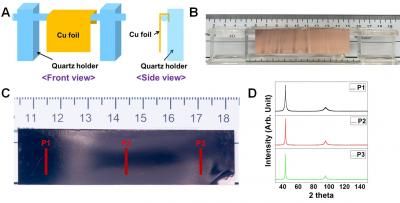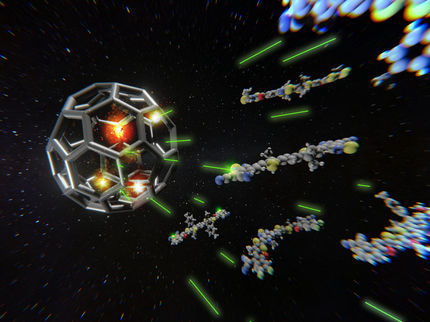Modern alchemy creates luminescent iron molecules
Advertisement
A group of researchers at Lund University in Sweden have made the first iron-based molecule capable of emitting light. This could contribute to the development of affordable and environmentally friendly materials for e.g. solar cells, light sources and displays.
For over 50 years, chemists have developed metal-based dye molecules for a wide range of different applications, such as displays and solar cells. This would ideally involve common and environmentally friendly metals like iron, but despite a number of attempts no one has been able to develop an iron-based dye molecule that can emit light until now. Researchers around the world have therefore instead largerly had to resort to various rare and precious metals, such as ruthenium, which have more easily provided the desired properties.
Through advanced molecular design, the Lund researchers have now successfully manipulated the electronic properties of iron-based molecules so that they much better resemble the ruthenium-based substances.
By doing so, they have, for the first time, created an iron-based dye molecule which is able to not only capture light, but also subsequently emit light of a different colour. The latter is significantly more difficult to achieve, which contributes to why the researchers' accomplishment in showing that the new iron molecule emits orange light is so important.
"Medieval alchemists tried to produce gold from other substances, but failed. You could say that we have succeeded in performing modern alchemy by giving the iron properties which resemble those of ruthenium", says Kenneth Wärnmark, Professor of Chemistry at the Faculty of Science at Lund University.
The new study describes an iron complex with a record-breaking life span in its light-absorbing and luminescent state: 100 picoseconds, which is less than a billionth of a second. But despite the seemingly inconceivably short time interval, it is quite sufficient.
"In the world of chemistry, this is enough time for the molecules to emit light", says Villy Sundström, Professor of Chemistry at Lund University.
These results provide an important step towards possible future applications as a luminescent material, such as for lighting and displays, as well as light absorbers in solar cells and photocatalysts for producing solar fuel. In order to reach this goal, a continued development of new, and even better molecules is necessary.
"We expect that the next step to develop the actual molecules that are suitable for commercial applications could take another five years", says Petter Persson, chemistry researcher at Lund University.
In addition to the researchers from Lund, the study has included researchers from the Ångström Laboratory in Uppsala and from Copenhagen.






























































